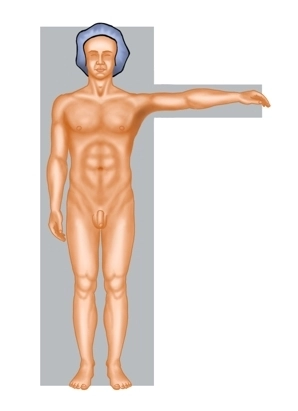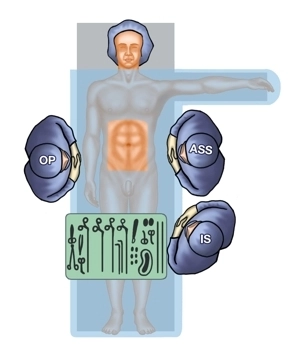- Hematological disorders, e.g., spherocytosis
- Autoimmune cytopenia, e.g., warm antibodies
- Storage disorder, e.g., Gaucher disease
- Thrombocytopenia, e.g., Werlhof disease
- Cysts, e.g., echinococcus
- Hemangioma
- Metastasis
- Abscess
- Primary splenic tumor
- Multivisceral resections
- Trauma
- Delayed splenic rupture
- Spontaneous rupture
- Splenic artery aneurysm
- Splenic vein thrombosis
-
Indication
-
Contraindication
Children ideally no younger than 15 years of age
Relevant comorbidityPlanned splenectomy always mandates a strict indication!
-
Preoperative diagnostic work-up
Splenectomy is indicated based on the patient’s underlying disease. Due of the multitude of possible pathologies, a focused diagnostic work-up by hematologists and internists is required.
Surgeons are especially interested in the morphology and vascular supply of the organ as well as the general operability and prognosis of the patient.
- Lab panels: Complete blood count, electrolytes, creatinine, coagulation, blood type
- Ultrasonography
- Abdominal CT and/or MRI
- If necessary, isotope scintigraphy to check for any accessory spleens
- ECG
- Chest radiographs
- If necessary, pulmonary function testing and BGA
-
Special preparation
- If possible, the patient should be vaccinated against pneumococci, meningococci and Hib at least two weeks prior to surgery
- Ready 2-4 units of packed RBCs
- In large spleens, the organ may be downsized by embolizing the splenic artery
- Since gastric decompression facilitates the procedure, place a gastric tube when inducing anesthesia
-
Informed consent
- General complications Thrombosis, embolism, pneumonia, wound infection, incisional hernia, hemorrhage, keloid formation, cutaneous nerve injury.
- Specific complications: Injury to abdominal organs such as the intestines, stomach and pancreas; pancreatic fistula; gastric wall necrosis; thrombophilia; susceptibility to infection; perisplenic/splenorenal abscess formation; pleural effusion; splenic and portal vein thrombosis; OPSI syndrome.
-
Anesthesia
As in all other major abdominal operations, splenectomy is performed under general anesthesia, with an epidural catheter if possible.
Also see:
Intubationsnarkose
Thorakale Periduralanästhesie bei viszeralchirugischen Eingriffen -
Positioning
![Positioning]()
With the patient in standard recumbent position, support the left flank with a cushion to expand the thoracic aperture for better exposure of the spleen. Depending on surgeon preference, the arms may abducted or adducted.
-
Operating room setup
![Operating room setup]()
The surgeon stands to the right of the patient, the assistant to the left, and the scrub nurse at the feet. A second assistant may facilitate the procedure.
-
Special instruments
- Standard abdominal tray with long abdominal retractors
- Retractor systems such as (thoracic) Mercedes retractor or self-retaining systems such as Omnitract
- Electrocautery, bipolar scissors are helpful
- Standard sutures and ligatures, with fine vascular sutures in readiness
- Suction
- Cellsaver, if necessary
-
Postoperative management
- Analgesia with central and peripheral analgesics
Follow this link to PROSPECT (Procedures Specific Postoperative Pain Management)
Follow this link to the current German guideline [MM1]Behandlung akuter perioperativer und posttraumatischer Schmerzen [Treatment of acute perioperative and posttraumatic pain].[MM2]
- Unrestricted ambulation and return to normal diet
- Bowel movement: Cathartics, if necessary
- Thrombosis prophylaxis depending on the underlying disease, procedure with intermediate to high risk of thrombosis
Follow this link to the current German guideline [MM3]Leitlinie Prophylaxe der venösen Thromboembolie [Guideline on prophylaxis in venous thromboembolism].[MM4]
Note: Renal function, HIT II (history, platelet check)
- Close monitoring of the platelet count (antiplatelet agent if thrombocytosis exceeds 800,000/µl). In 80% of patients, the platelet count will normalize after a few weeks
- Pneumonia prophylaxis
- Regular wound inspection
- Suture removal 10-12 days after surgery
- Length of stay in hospital about 8-10 days
- Work disability about 3 weeks
- If not done preoperatively, vaccinate the patient 2-4 weeks after surgery
- Analgesia with central and peripheral analgesics


